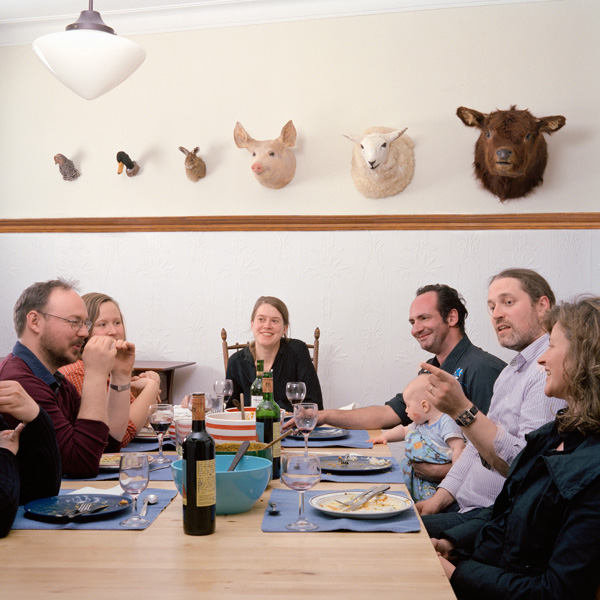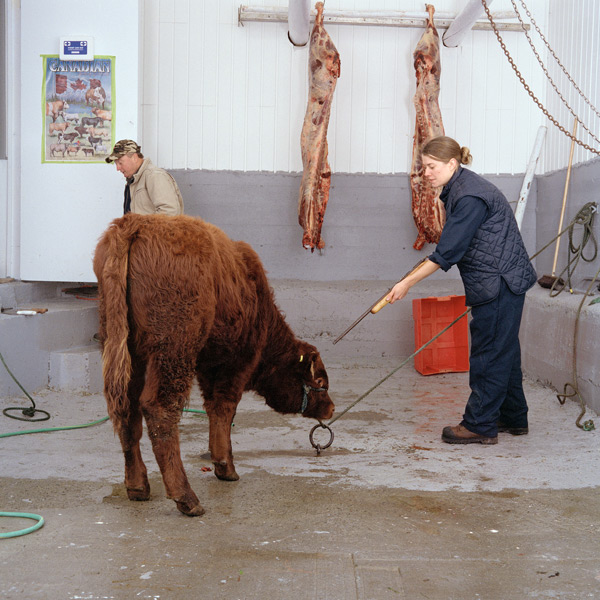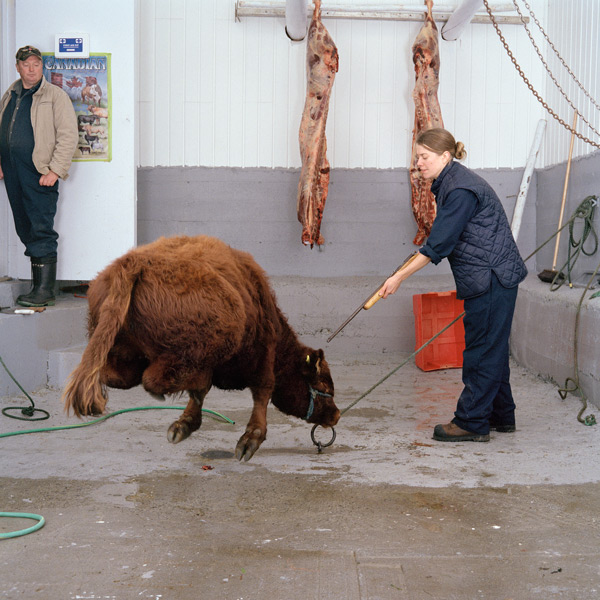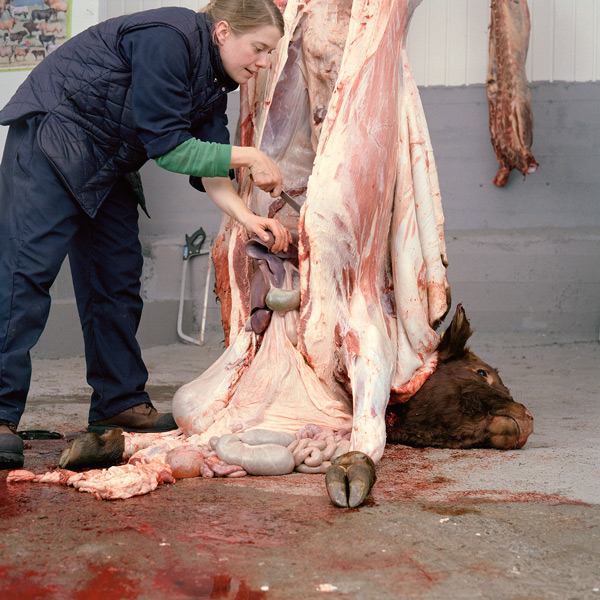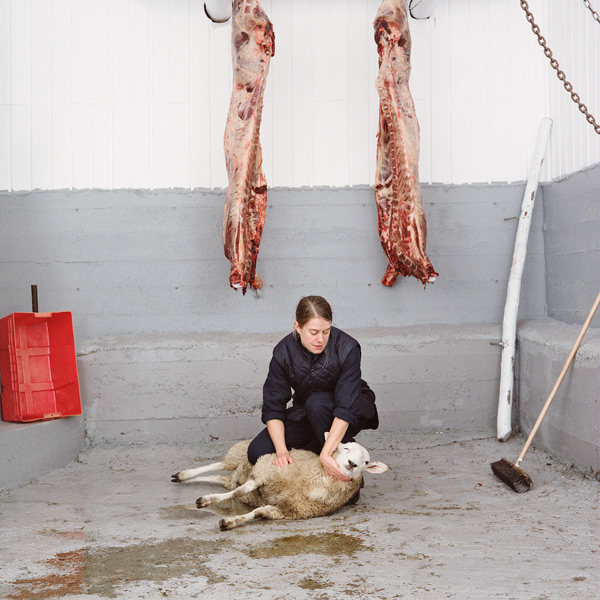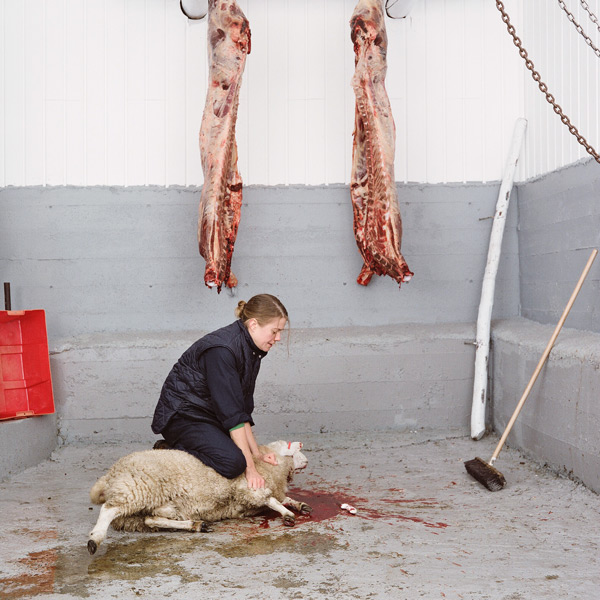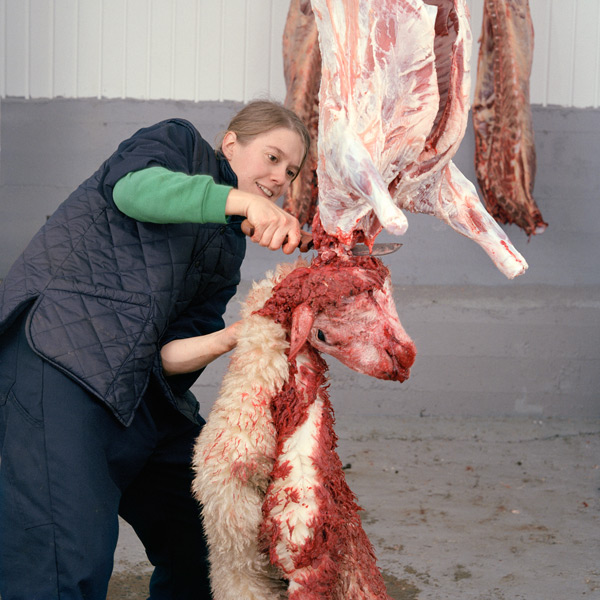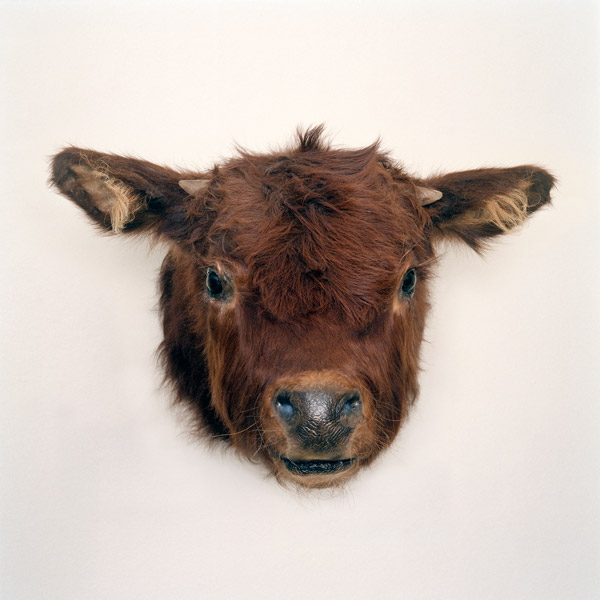[Winter 2014]
By Sonia Pelletier
Over the years, it has been possible to observe a strong trend in Kim Waldron’s photographic work – a central theme or modus operandi that has been evident in her projects since the very beginning. The artist usually appears in her images, but although she is the central subject, she is not really performing a “spectacle of the self.” Rather, her exhibitions, structured around a series of images, involve life stories that are presented more as “self-practices” linked to the workplace and what goes on there. Establishing a connection between the self and the other and making possible the processing and acquisition of knowledge, labour constructs identities that Waldron adopts in her pieces. Each project has its original aspect, but all are inhabited by a certain “aesthetic of existence,” to use Foucault’s expression. The process of creation through labour plays a large part, and at the same time we perceive the transfer from space of experience to space of art. More concretely, most of Waldron’s projects are made during residencies. It is during these long stays that the artwork emerges, enabling her to establish links between private and public, to experience discomfort, as well as control and its loss, and to put herself in the other’s skin. In the end, in addition to acquiring gratitude and raising some awareness, the artist is committed to returning access to private spaces – a sharing of the sensory – to the other.
At the core of many of Waldron’s projects, including the most recent, Beautiful Creatures (2010–13),1 arises a concept formulated by Deleuze and Guattari, that of “becoming animal.”2 This notion is not related to the potential for similarity or a “doing as if” between humans and animals, but refers to “work on the self,” a sort of spiritual learning approaching asceticism.
In fact, even before a photographic result is shown to us, there has been in this work a “making available” that necessitates conditions other than a formal staging. The artist portrayed in the image is less present as subject than as object of experience. In tandem with her research, negotiations with volunteers, and technical learning, Waldron devotes much of her creative process to immersing herself in private spaces and living through unusual situations from which she emerges changed. Connected more to “attitude” art, associated with performance, Waldron often puts herself in difficult situations and lives as an impostor. There is certainly reason to address her works within a broader contemporary art current – that of the relational aesthetic or a movement formerly called “art and life.”
Beautiful Creatures is Waldron’s largest corpus to date. Created over a number of years, this body of work highlights the relationship between people and animals. In an introspective approach, formed through commitment and responsibility, these images show the steps that lead to the transformation of the human being and the animal. From coming into contact to sharing of food, six animals were used in this project. Guided by her concern with mastery of the unknown, Waldron first learned the art of slaughtering from butchers. This involved a step of negotiation that appears obvious, but that raised some difficulties and prejudices – including those about the growing devaluing of this trade, the practice of which is seen as a male prerogative. In the images, Waldron’s discomfort is patent, and her control doubtful. We can see that she is fearful. It must be remembered, we are in a private space in which the artist is conducting a live experiment and the action is formed of raw images. In contrast to this emotive group of images, other photographs show animals living in their environment, packages of meat piled up symmetrically, and Waldron cooking appetizing dishes and festive portraits of guests around a table. And the artist also has her hunter’s pride: animal heads have been stuffed, hung on the wall, and photographed.
In addition to a certain reinvigorated reaction to the current system of over-consumption, this photographic series reminds us of a way of life that is being lost. Here, nothing seems to be lost or created, on the order of a ritual that passes from death to rebirth. The entire body of work is the result of a preparation, an initiation, a practice, and a sharing that offer respect and honour to the distance from the industrial and commercial agrofood system that prevails today.
. . . there has been in this work a “making available” that necessitates conditions other than a formal staging. The artist portrayed in the image is less present as subject than as object of experience.
Waldron tells us that as she was selecting her images, something was revealed to her. Although the images retained from this process are striking for their bloodiness, t is not a spectacular effect; through a private and often uncomfortable relationship, we are taken into the artist’s “temporal” and private space. It is a sort of bond of complicity and compassion, perhaps at the core of “becoming animal” despite the suffering and blood, outside of a relationship with the territory. It is not that Beautiful Creatures is a more complete work, but that it seems to close the circle on the action that allows us to reflect on the real and the role of the image. It throws into sharp relief the movement from life to death and that from death to life.
Very early in Waldron’s career, she made a series of self-portraits called Working Assumption (2003), in which she wore different professional uniforms that were too big for her. In a sort of game, but also to extend her knowledge of French and explore some of her fears about human relations, during a four-month stay in Paris Waldron asked men if she could wear their clothes and invade their workspace for one hour. In the photographs resulting from this exercise, we see her wearing the uniforms of a mechanic, a butcher, a doctor, a priest, a chef, a French teacher, and others. In this experiment, she raises an issue with feminist undertones: the role of women in jobs traditionally reserved for men.
In another project, the series Triples (2009), we feel in the images, a bit like the third person evoked in Simone de Beauvoir’s novel L’invitée, the discomfort raised by the artist’s presence. For this artwork, created during a residency in Vienna, the artist approached couples and the discomfort was produced by the fact that she was intruding into the daily life of their household. Waldron was trying, more broadly, to challenge the exclusive structure of the couple as a social construction and to demonstrate the complexity of a relationship grappling with individual and communal desires.
Still in continuity with “setting a test” in order to “set the scene,” or a performative action “set in motion,” Waldron is planning a residency in Beijing, China. There, she will try to convince factory workers to let her become their family helper and perform household tasks to lighten their load and take care of their home while they are at work. This commendable challenge will also be faced, one can imagine, with numerous cultural barriers. In any case, Waldron loves to get involved and will conduct this new experiment with her natural respect and generosity.
Translated by Käthe Roth
2 Gilles Deleuze and Félix Guattari, Mille plateaux (Paris: Éditions de Minuit, 1980), p. 342.
Kim Waldron was born in Montreal. She holds a BFA from NSCAD University and an MFA from Concordia University. She has exhibited extensively, most notably at the Musée régional de Rimouski, Oboro (Montreal), Œil de Poisson (Quebec City), Gallery 44 (Toronto), Eyelevel Gallery (Halifax), the Art Gallery of Windsor,and La Centrale Galerie Powerhouse (Montreal). She is a 2013 recipient of the Claudine and Stephen Bronfman Fellow- ship in Contemporary Art and she just won the Pierre-Ayot Award 2013, from the city of Montreal. kimwaldron.com
Sonia Pelletier is the editorial coordinator of Ciel variable.

